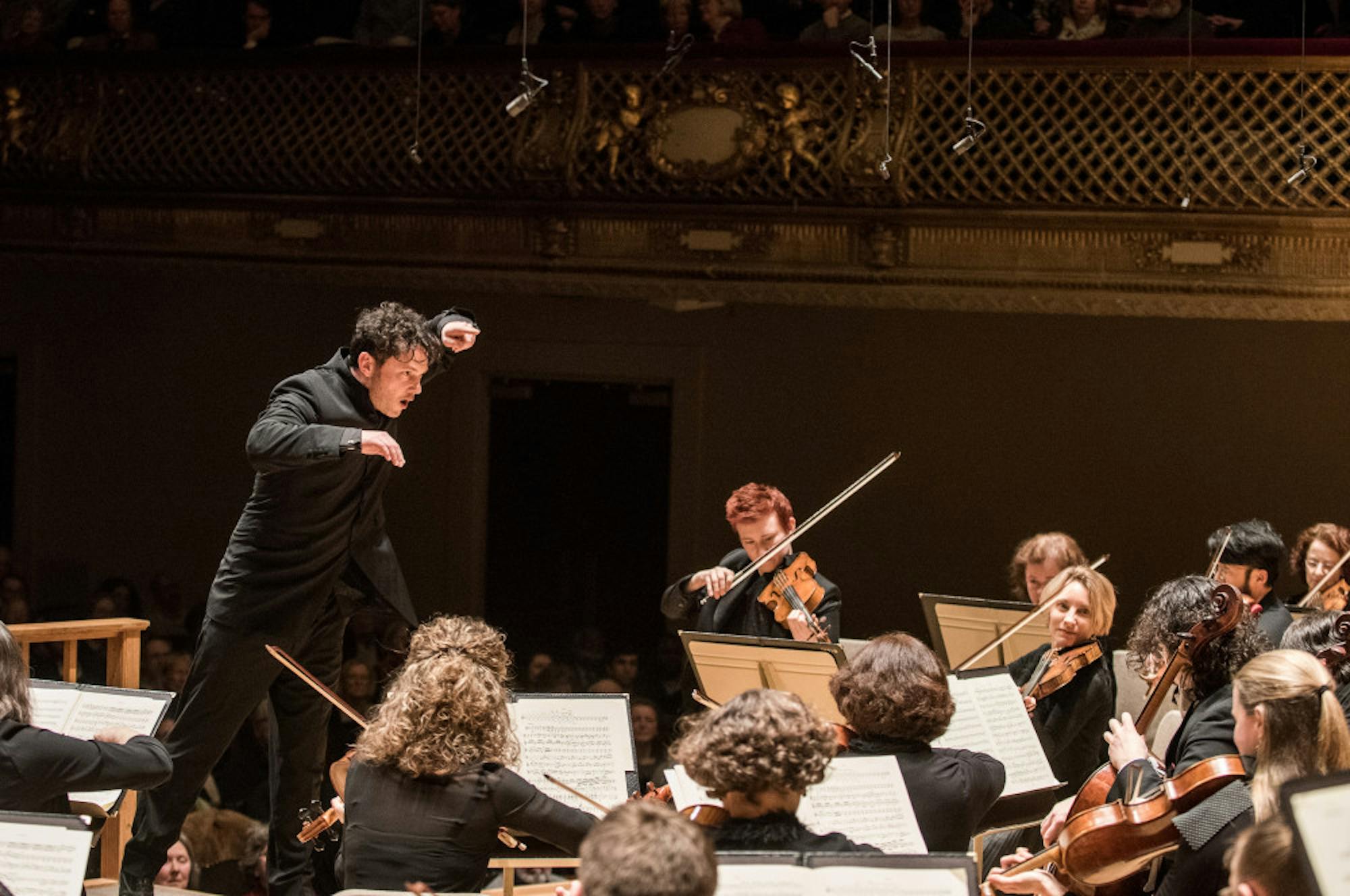Matthew Halls led the Handel and Haydn Society in their Sunday, March 10 concert, which included performances of Mozart’s "Overture to The Magic Flute," Carl Maria von Weber’s "Clarinet Concerto No. 1" with soloist Eric Hoeprich and Beethoven’s "Symphony No. 5." Handel’s "Coronation Anthem No. 1" was also performed with guest conductor Emily Isaacson as a part of the 2019 Community Youth Collaboration.
Isaacson opened the program by leading the H+H Orchestra alongside students from various Boston-area high schools in George Frideric Handel’s "Zadok the Priest," composed in 1727 for the coronation of King George II of Great Britain and Ireland. The blend between the orchestra and the vocalists in this performance was particularly noteworthy, and the choir demonstrated its ability to remained synchronized with the instrumentalists even through complex, melismatic passages.
After the performance of Handel, the spotlight went to the H+H Orchestra and conductor Matthew Halls. The only word that could accurately capture Halls’ conducting ability would be 'versatile.' His capability to be subtle yet expressive demonstrates his extremely profound understanding of the music and his capacity to transmit that passion to each musician on stage. At several points throughout the concert, Halls extended this connection to the audience, and magically cued members to hold their breaths in moments of musical suspense, or to sigh in relief as tension is resolved.
From the first chords of the "Overture to The Magic Flute," the H+H Orchestra produced a coherent and classical sound, with each note played deliberately and clearly. Principal players Emi Ferguson on flute and Debra Nagy on oboe shone in their solo passages, both producing piercing and bright sounds that were easily heard above the lower winds and strings.
As an orchestra focusing on performance of Baroque and Classical period works, the H+H Society is a small, yet coherent group comprised of musicians with historically informed performance training. Most musicians play on period instruments, including clarinetist and soloist Hoeprich, who gave a captivating performance of Weber's "Clarinet Concerto No. 1." On his clarinet modeled after a design by Griessling & Schlott, Hoeprich produced a warm, pure sound that filled the hall throughout the duration of the concerto, which is full of sonorous passages requiring great dexterity, breath control, and musicality from the soloist — all of which are traits of Hoeprich possesses. The work concluded with a well-deserved standing ovation.
The second act consisted of a stunning performance of Beethoven’s "Symphony No. 5," which is undoubtedly one of the most recognizable and victorious-sounding works of orchestral music. Halls, keeping with the character of the symphony, began the first measures even before the opening applause had ceased, and took a thrillingly quick tempo, adhering to the 'allegro con brio' marking of the first movement. The fermatas on the fourth and eighth notes of the piece were held for a much shorter duration than is typical for performances of this work, but their shortened length contributed to the urgency established by the opening tempo. The principal motif of this symphony is introduced in the first measures and passed between instruments throughout much of the work. The melodic transfers were executed flawlessly in this extremely cohesive group, and the motific line acted as a structure upon which sub-motives and countermelodies were laid.
The second movement strays from the rage of the first movement, and is characterized by a beautiful lilting melody first played by the violas. H+H, as a period orchestra, tunes to an A=430 Hz, a classical period tuning, which is upwards of 10 Hz below modern tuning. Overall, this lower tuning produced darker, mellower sound, which served this particular symphony well because even in the beauty of the second movement, there remains an underlying tension and uneasiness in the harmonies. This tension was articulated well by H+H through their historically accurate tuning and musicality.
One of the greatest and most difficult transitions between movements falls between the third and fourth movements. Timpanist Jonathan Hess was perfectly engaged with Halls throughout this transition, and drove the accelerating tempo and enlivening character into the final movement. Halls led the orchestra to a triumphant finale, savoring every note and leaving the final chord to resonate in the air for several seconds after the musicians stopped playing. In one of the quickest standing ovations this reviewer has seen, the audience erupted before Halls even dropped his hands to indicate the conclusion of the performance.
Handel and Haydn Society triumphs in performance of Beethoven’s Fifth

Conductor Matthew Halls is pictured leading the Handel and Haydn Society on March 10.
Summary
This concert captured the spirit of Beethoven's triumphant Fifth Symphony and showcased the extreme versatility of Matthew Halls and the H+H Society Orchestra.
5 Stars





